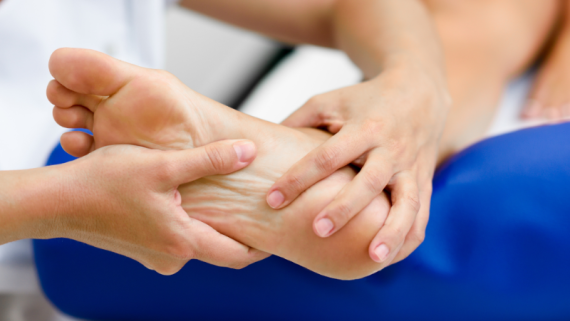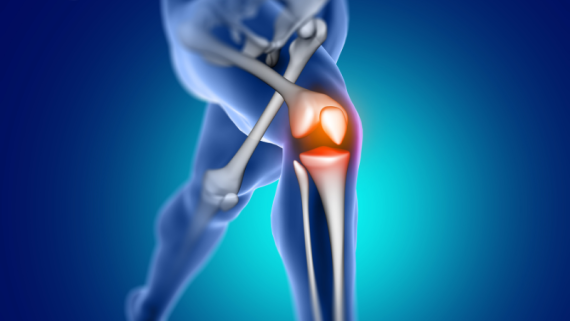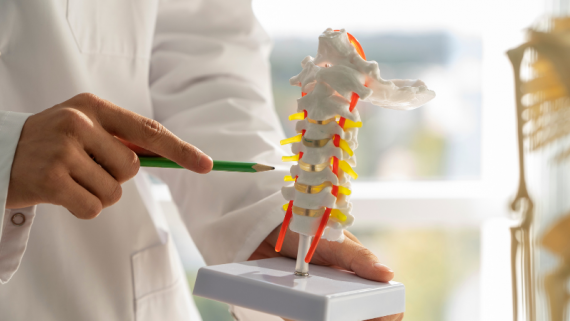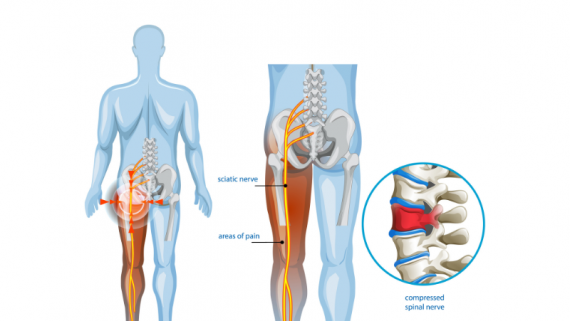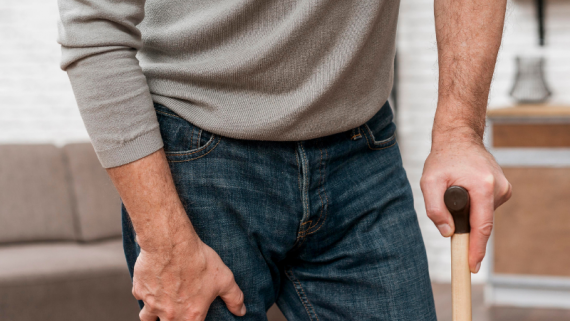Waking up with a sharp, stabbing pain in your heel can be a jarring start to the day. For millions, this morning agony is a familiar symptom of plantar fasciitis, a frustrating and often debilitating condition. This inflammation of the plantar fascia, a thick band of tissue running across the bottom of your foot, can make every step feel like a chore. The good news is that for most people, plantar fasciitis is not a life sentence. With a combination of a proactive approach, diligent care, and professional guidance, it is possible to find a long-term cure. This complete guide will walk you through the causes, treatments, and prevention strategies to help you finally say goodbye to heel pain. What Exactly is Plantar Fasciitis? The Root Cause of Your Heel Pain To effectively treat the problem, you must first understand it. The plantar fascia is a crucial ligament that supports the arch of your foot and acts as a shock absorber. When this ligament is subjected to excessive tension and stress, tiny tears can occur. Over time, these small injuries lead to inflammation and pain, particularly at the point where the fascia connects to the heel bone. Several factors can contribute to this stress:
- Overuse and Repetitive Strain: Activities like long-distance running, ballet, or even a sudden increase in physical activity.
- Improper
For millions, chronic back pain is more than just a nuisance; it’s a relentless force that dictates every aspect of life. Simple activities like walking, sitting, or even sleeping can become a struggle. For decades, the primary solution for severe, persistent back pain was traditional open surgery—a procedure that often came with a lengthy and painful recovery, a large incision, and significant risk. Today, the landscape of pain management has been revolutionized by a ground-breaking approach: Spine Endoscopy. This advanced, minimally invasive procedure is changing how we view back pain treatment, offering a powerful, non-surgical alternative that promises faster recovery and a return to a vibrant, active life. The Hidden Truth About Back Pain & Traditional Surgery Back pain is a complex issue, often stemming from conditions like a herniated or slipped disc, sciatica, or spinal stenosis. When conservative treatments such as physical therapy and medication fail, surgery has long been the last resort. Traditional spine surgery involves a large incision, cutting through muscles and tissues to access the spine. While effective, this traumatic process often leads to prolonged hospital stays, significant post-operative pain, and a recovery period that can last for months. What is Spine Endoscopy? The Minimally Invasive Revolution Spine endoscop
Sports injuries can range from mild strains to severe ligament tears, causing discomfort, downtime, and long-term joint issues. Traditional treatments often rely on rest, medication, and physiotherapy. However, advancements in regenerative medicine—particularly stem cell therapy—are revolutionizing how athletes and active individuals recover. This treatment not only speeds up healing but also significantly reduces pain without the need for surgery.
How Stem Cells Help in Sports Injury Recovery
Here we explain how stem cell therapy works by harnessing the body’s natural healing mechanisms:
1. Reduces Inflammation
Injuries often trigger inflammation that causes pain and restricts mobility. Stem cells release anti-inflammatory agents that calm this response, providing fast pain relief.
2. Promotes Tissue Regeneration
Stem cells have the unique ability to transform into specialized cells such as muscle, tendon, ligament, or cartilage cells. This helps regenerate
Are you experiencing a nagging pain that travels from your lower back, down through your buttocks, and into your leg? You’re not alone. Many people experience various forms of back pain, but when it follows this specific path, it’s often a tell-tale sign of sciatica. While back pain can be a vague term, sciatica refers to a distinct set of symptoms caused by the irritation or compression of the sciatic nerve, the longest nerve in your body.
The good news is that for most individuals, effective relief from sciatica and its underlying causes can be found through non-surgical treatments. Understanding whether your pain is indeed sciatica, what’s causing it, and the available treatment options is the first step towards a pain-free life.
What is Sciatica?
Sciatica isn’t a condition itself, but rather a symptom of an underlying problem affecting the sciatic nerve. This nerve originates in your lower spine, branches through your pelvis, and extends down each leg, controlling muscles in the lower leg and providing sensation to the thigh, leg, and foot. When something compresses or irritates this nerve, it results in the characteristic pain, numbness, tingling, or weakness associated wi
While most people recover from COVID-19 within a few weeks, many continue to experience lingering symptoms long after testing negative. One of the most commonly reported complaints is post-COVID body pain — especially in the back, joints, muscles, and shoulders. These discomforts can persist for months and significantly affect quality of life.
Fortunately, with the right medical guidance and non-invasive care, post-COVID pain can be managed effectively. At Kolkata Pain Relief, Dr. Krishna Poddar, a highly experienced pain consultant in Kolkata, offers comprehensive and personalized solutions for chronic pain arising from post-viral fatigue or inflammation.
Why Does Post-COVID Body Pain Happen?
COVID-19 is not just a respiratory illness; it affects multiple systems in the body. Post-recovery, some people report chronic pain in the muscles and joints, which may be due to:
1. Prolonged Inflammation
The immune system stays acti
Chronic knee pain can significantly impact daily life, especially for those suffering from osteoarthritis or degenerative joint disease. While medications and physiotherapy offer temporary relief, many patients seek long-lasting, non-surgical solutions. Enter Cooled Radiofrequency Ablation (Cooled RFA) — a cutting-edge, minimally invasive treatment that is revolutionizing how we manage knee pain.
If you’re considering knee pain treatment in Kolkata, understanding how Cooled RFA works could be the game-changer you’ve been looking for. Under the expert care of Dr. Krishna Poddar, a leading pain consultant and the best knee pain specialist in Kolkata, you can explore this innovative treatment for effective, long-term relief.
What is Cooled Radiofrequency Ablation?
Cooled Radiofrequency Ablation is a specialized procedure that uses radio waves to target and disable pain-causing sensory nerves around the knee joint. Unlike traditional RF therapy, this advanced method employs a cooling mechanism during the ablation, allo
Knee pain is a common orthopaedic issue that affects millions, but studies show that women are more prone to knee pain than men, especially as they age. From biological differences to lifestyle factors, there are multiple reasons behind this trend. Fortunately, with early intervention and proper care, most causes of knee pain can be managed or even prevented. If you’re a woman struggling with persistent knee discomfort, consulting the best Knee Pain Specialist in Kolkata, such as Dr. Krishna Poddar, can make all the difference in regaining mobility and improving quality of life.
Why Women Experience More Knee Pain Than Men
Several factors contribute to the increased prevalence of knee pain in women. These include anatomical, hormonal, and biomechanical differences, among others.
- Hormonal Fluctuations
Hormones like estrogen and relaxin fluctuate during menstruation, pregnancy, and menopause. These hormones affect the ligaments and connective tissues, often making them more lax and prone to injury.
- Estrogen can weaken ligaments, increasing the risk of tears or strains.
- Hormonal changes during menopause also contribute to joint stiffness and
Facet Arthropathy, also known as facet joint syndrome, is a degenerative condition affecting the small joints between vertebrae. It leads to chronic pain in the back or neck, often mistaken for common spinal issues. While surgery may be a last resort, Radiofrequency Ablation (RFA) is emerging as a highly effective non-surgical treatment that provides long-lasting relief. What Is Facet Arthropathy? Facet joints are the small stabilizing joints located between and behind adjacent vertebrae. When these joints wear down due to aging, injury, or arthritis, they become inflamed, resulting in facet arthropathy. Common Symptoms Include:
- Persistent neck or lower back pain
- Pain aggravated by twisting or arching the spine
- Stiffness, especially in the morning or after inactivity
- Referred pain in the buttocks, hips, or shoulders
What Is Radiofrequency Ablation (RFA)? Radiofrequency Ablation is a minimally invasive procedure that targets the nerves transmitting pain from the affected facet joints. By using controlled radio waves, the nerves are heated and deactivated, blocking pain signals from reaching the brain. How the Procedure Works:
- A diagnostic nerve block is performed first to confirm the source of the pain.
Sciatica pain can feel unbearable—shooting down your lower back, hips, and legs, often disrupting your daily life. While some severe cases may require surgery, many people find lasting relief through non-surgical treatment for Sciatica. If you’re exploring ways to manage sciatica without going under the knife, you’re not alone. With advancements in modern medicine and regenerative therapies, there are now several non-invasive solutions for sciatica—especially if you consult the right specialist, like Dr. Krishna Poddar, known for effective sciatica treatment in Kolkata. What Causes Sciatica Pain? Sciatica occurs when the sciatic nerve, the longest nerve in your body, becomes compressed or irritated. This often happens due to:
- Herniated discs
- Spinal stenosis
- Degenerative disc disease
- Muscle tightness (especially piriformis syndrome)
The symptoms can range from mild numbness to sharp, radiating pain from the lower back down to the leg. Top Non-Surgical Treatments for Sciatica
- Physiotherapy
One of the most common and effective ways to treat sciatica without surgery is through p
Chronic pain becomes a harsh reality for many individuals as they cross the age of 60. Whether it’s aching joints, persistent back pain, or arthritis-related discomfort, the toll it takes on daily life is undeniable. While traditional pain management options often involve long-term medication or invasive surgeries, a new, promising solution is changing lives — stem cell therapy. Learn about how stem cell therapy is helping in managing chronic pain after 60 here. Why Chronic Pain Increases After 60 Aging naturally brings about degeneration in cartilage, joints, tendons, and bones. Conditions like osteoarthritis, degenerative disc disease, and chronic joint inflammation are common in older adults. Many seniors turn to painkillers or joint replacement surgeries, but these options come with side effects, risks, and prolonged recovery times. That’s where stem cell therapy comes in as a breakthrough approach for non-surgical recovery. How Stem Cell Therapy Works Stem cell therapy involves using the body’s natural regenerative cells to repair damaged tissues. These stem cells can be harvested from bone marrow or adipose tissue and then injected into the affected area. Once introduced, they begin repairing cartilage, reducing inflammation, and promoting healing at a cellular level. For elderly patients, this can

